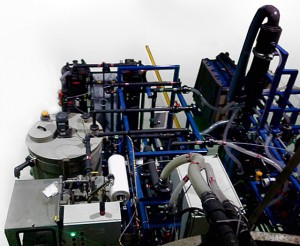
General Electric recently demonstrated a breakthrough water treatment method, they call AquaSel non-thermal brine concentrator (NTBC) technology, that virtually eliminates any water losses in ingredient water production. At a major global beverage company in Asia, GE recently conducted a pilot study were they achieved a near-zero liquid discharge (ZLD), and reduced water costs, without the normal energy expenses associated with a thermal evaporation system.
With today’s technology, bottling companies typically use 75 to 85 % of the incoming water for bottled water and the variety of soft drinks they produce, and the rest is discharged as a waste stream. Using GE’s AquaSel technology, these companies could safely treat and reuse the water, to achieve 99+ percent recovery in their plants.
“Billions of gallons of usable water are lost every day because today’s water treatment technologies have techno-economic limits on how much water can be treated and reused”, said Heiner Markhoff, president and CEO, water and process technologies for GE Power & Water. “GE’s NTBC technology can turn billions of gallons of lost water into clean, usable water by virtually eliminating the wastewater streams in a variety of industrial and municipal treatment processes.”
According to GE, and the results from the pilot study, as much as 30 million gallons (almost 114 million litres) of water per day could potentially be saved or recovered if the NTBC technology were to be in place at all the major bottling plants. Worldwide this would add up to nearly 11 billion gallons (almost 42 billion litres) of water per year.
As well as being able to recover the majority of the water in the wastestream, the NTBC system also has a much lower energy requirement than other systems. Implementing this new water technology from GE as the potential to significantly reduce the energy demand and the resulting costs, as well as water expenses. So if not for the great environmental advantages, there is still a huge incentive for businesses to invest in the equipment for it’s great potential at reducing company costs.
